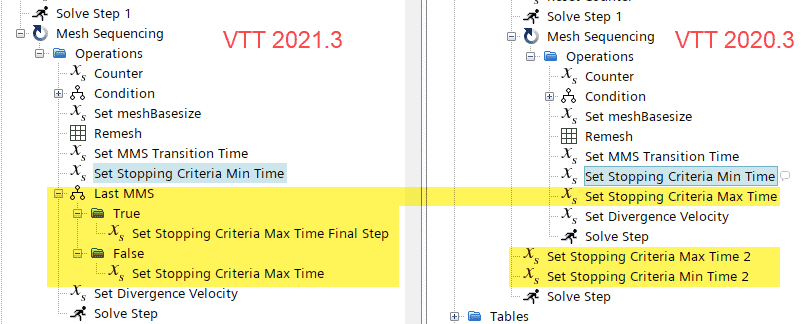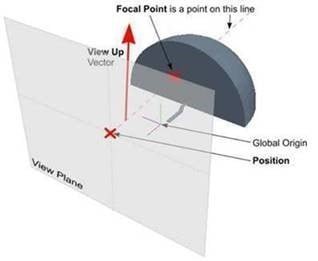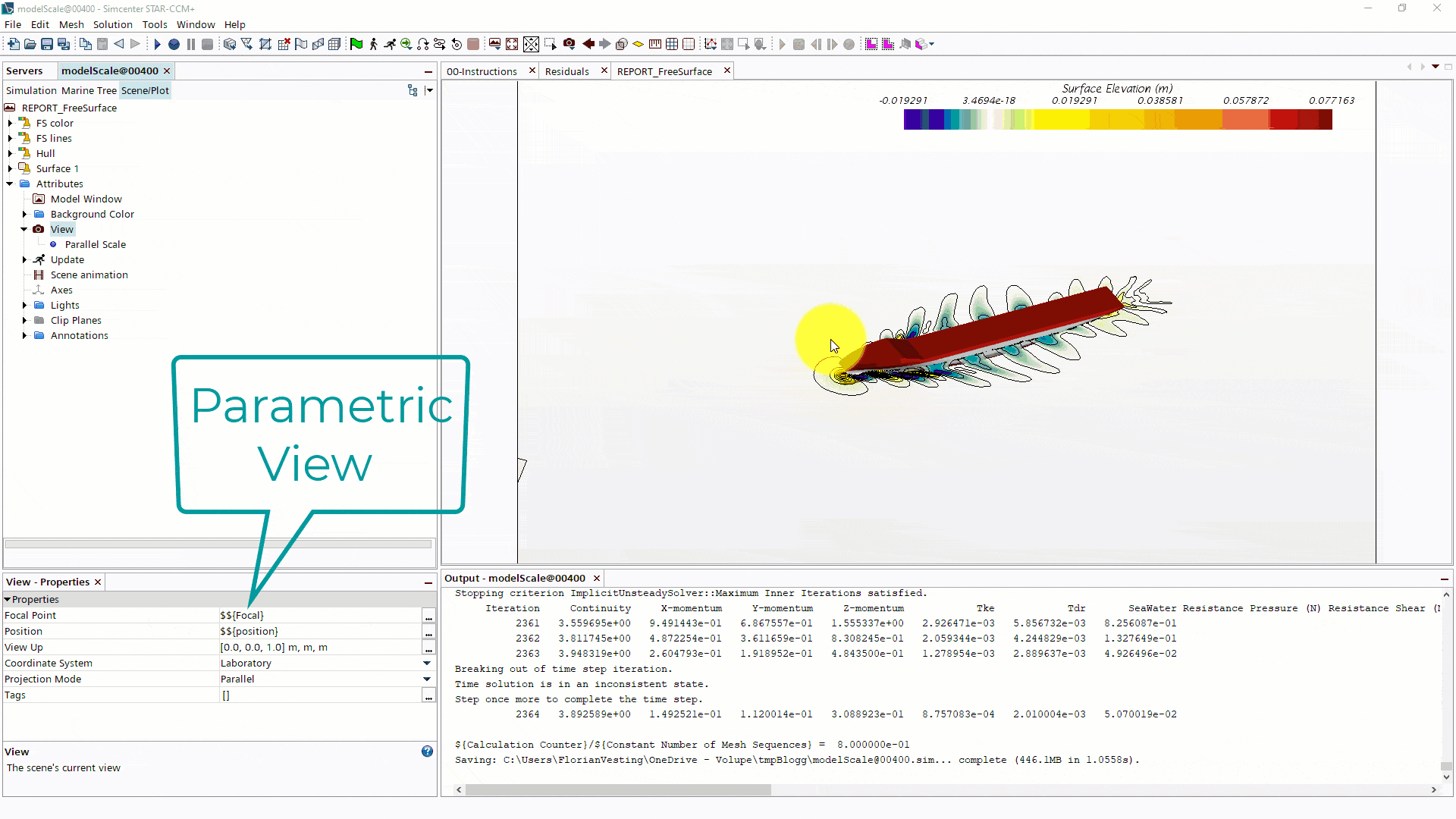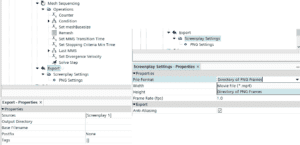Virtual Tow Tank template is the tool for naval architect to increase productivity for calm water resistance simulations. The template simulation file reduces pre and post-processing times and adopts mesh sequencing techniques, with the Multi-Mesh-Sequencing (MMS) approach. In this week´s blog we are happy to provide a summary of changes between the latest VTT template versions, introduce an enhancement of the 2022.1 release (template file format *.simt) and show you how to parametrize scene export to use your template for multiple ship scales.
New VTT version 2021.3
By Siemens
The new version of the VTT template contains changes to guarantee the intended application of simulations at Froud number <= 0.4. The most prominent change in the VTT workflow is a change to the Maximum Physical Time the last MMS. The new version allows for a longer maximum physical simulation time in the last sequence to ensure that the simulation reaches the Final Resistance Convergence. But changes trims the operation and reduces the needed constant parameters.

Please consider the attached change log for a detailed list of improvements on the robustness of the workflow.
New Template format
By Siemens
Simcenter STAR-CCM+ version 2022.1 releases the formalization of the concept of Simulation Templates: The template file format *.simt.
The latest version introduces the ability to save your workflow by making use of (for e.g. filter, tags, simulation operations etc.), as a designated template file. The new “Save to Template” option, also adds a layer of protection, reducing the risk to overwrite the simulation template by mistake.
Once a simulation template has been created by template authors, the users of the simulation templates can leverage streamlined workflows automatically and have the improved ability to focus on relevant information. With this enhancement in the 2022.1 release, new simulation files can be created directly from a template. If we look at the video above we can see that we now have to choice to create a new file from a template and select the desired template to be used as a starting point.
When the new simulation opens, the users will see a custom tree (specified by the template author) as the initial view. Now users just have to follow the instructions given by the author, in this case we just need to import the geometry, check and modify some parameters, save and run the simulation.
When saving the file users have the possibility to save it as a regular sim file or as a template. This means they are ‘less likely’ to overwrite the actual template or to create too many versions of it! And new simulation are always created from same template.
Parametric Scene view export
By Volupe
Working with the VTT template on a variety of ships is one of the strengths of a template. Virtually every quantity is parametrized, filtered or tagged to automate calculation by the simulation operations. However, working with large differences length scale, e.g. simulating both in model and full scale respectively challenges the post-processing in scenes.

In Simcenter STAR-CCM+, every scene has a camera to convert the three-dimensional objects in a scene into the two-dimensional image visible on the screen. The information defining the orientation, position and projection of the three-dimensional objects is stored in a View object in Simcenter STAR-CCM+. The View is defined by two vectors (Focal Point and Position) and either Parallel Scale or Perspective Angle.
The Focal Point is always placed in the center of your scene displayed on your screen. If you want to shift the object relative to the center of the scene, you will have to relocate the Focal Point. The Position is the location of the camera of a scene. These entities to can also be parametrized to recenter ships with different length. However, parametrization is overwritten as soon as the view is change manually. Furthermore, can large variations in ship size i.e., model scale vs. full scale, not be considered by solely changing Focal Point and Position.

To overcome these two deficits, we can make use of the new Export Simulation Operation by exporting images of a Screenplay. Typically, Screenplay is designed to easily create animations, but it can also dump a series of images instead of an .mp4 file. So, by properly adjusting frame rate and Screenplay duration, you can loop through a desired set of views using just one Scene. And by specifying the view of the Screenplay Scenes, we can separate and thereby protect the parametric view from the user interference.
- First, you must create a Screenplay in your simulation, where you create an action for the camera view. To save we the parametric view we need only a single key-frame.
- Set the animation duration to less than a second, and set “End Duration” in Screenplay > Director equal to 0.
- Set the Scene View Interpolation to Linear for a simpler control.
- Now you can create the Export Operation at the end of the MMS loop.

- Select the created Screenplay 1 as Source and Directory of PNG instead of Movie file with 1 Frame Rate per second.
How to set up parametric view with Screenplay
We can create a second key-frame to differentiate between model scale and full scale zoom in the view. The second key-frame get the same Focal and Position, yet a different value for Parallel Scale. Change the duration of the Screenplay Action to 2 seconds. By doing so, the Export Operation will export two images with the same view but different scale:

We at Volupe hope that this blog post about the updates on the VTT template is useful for you and that it will help you in your work. You can download the simulation template file and the change log mentioned here with the link below. And don’t forget that you are always welcome to reach out to us at support@volupe.com.
The Author
Florian Vesting, PhD
Contact: support@volupe.com
+46 768 51 23 46

